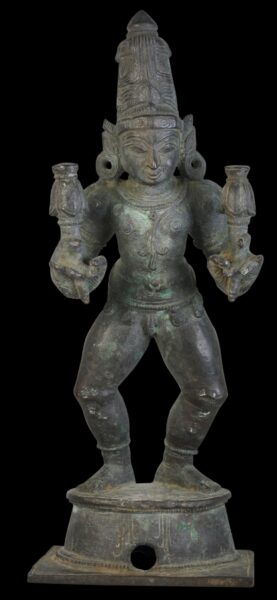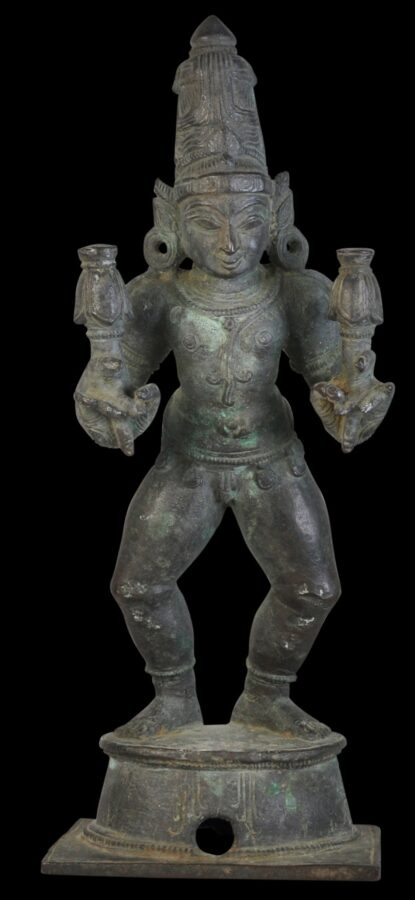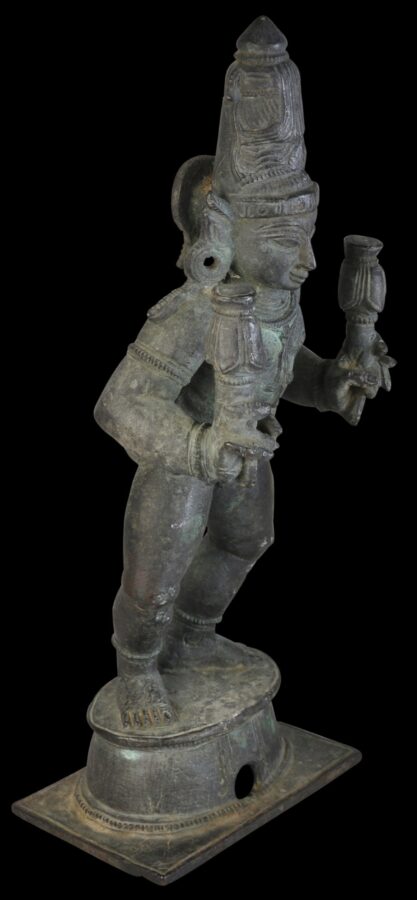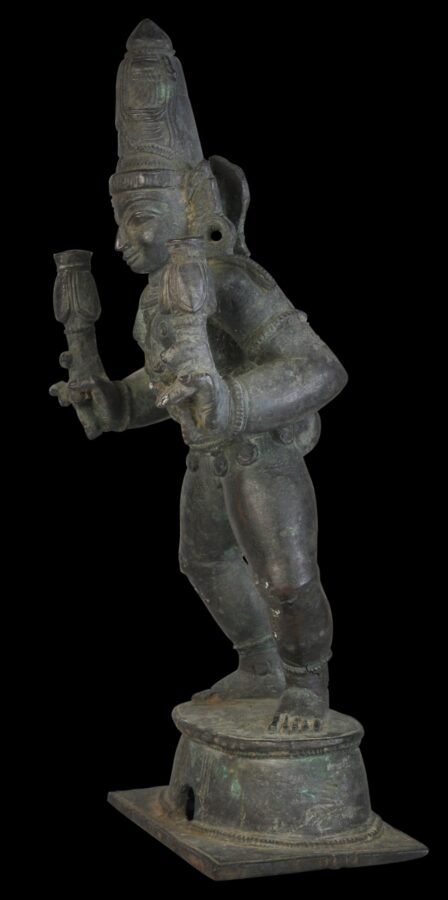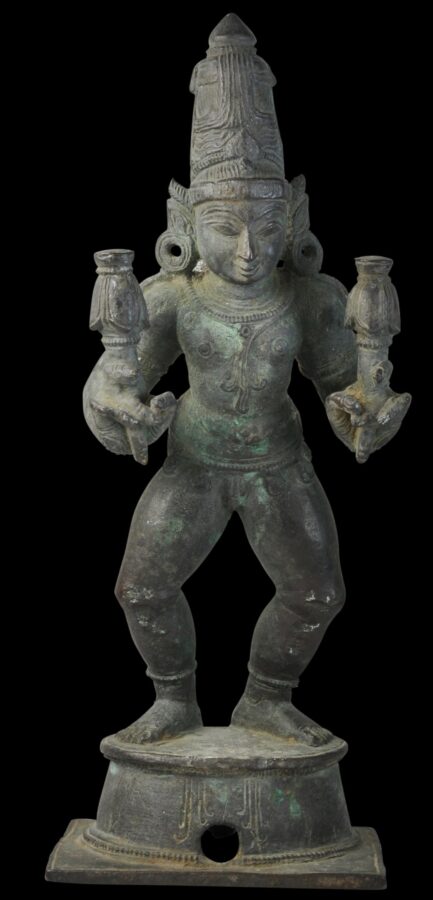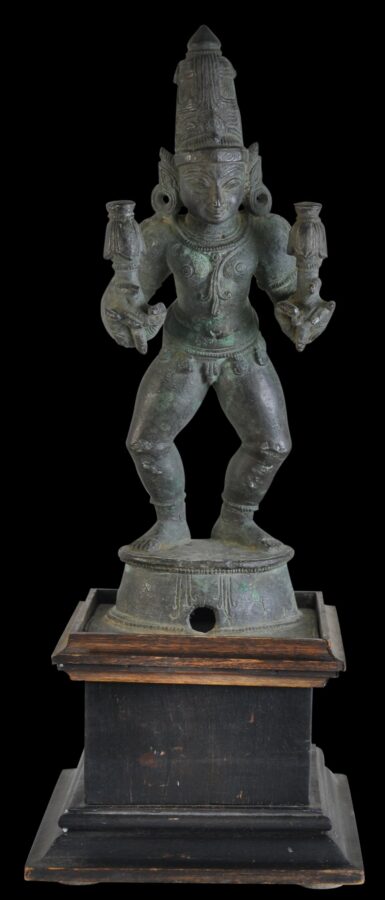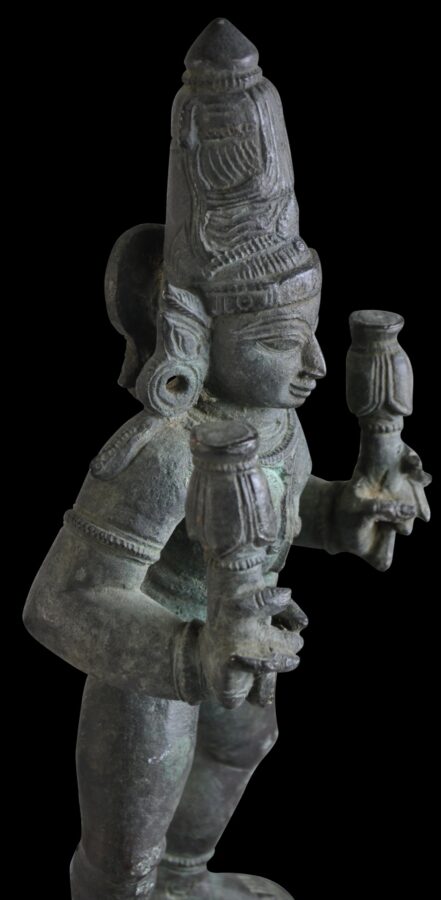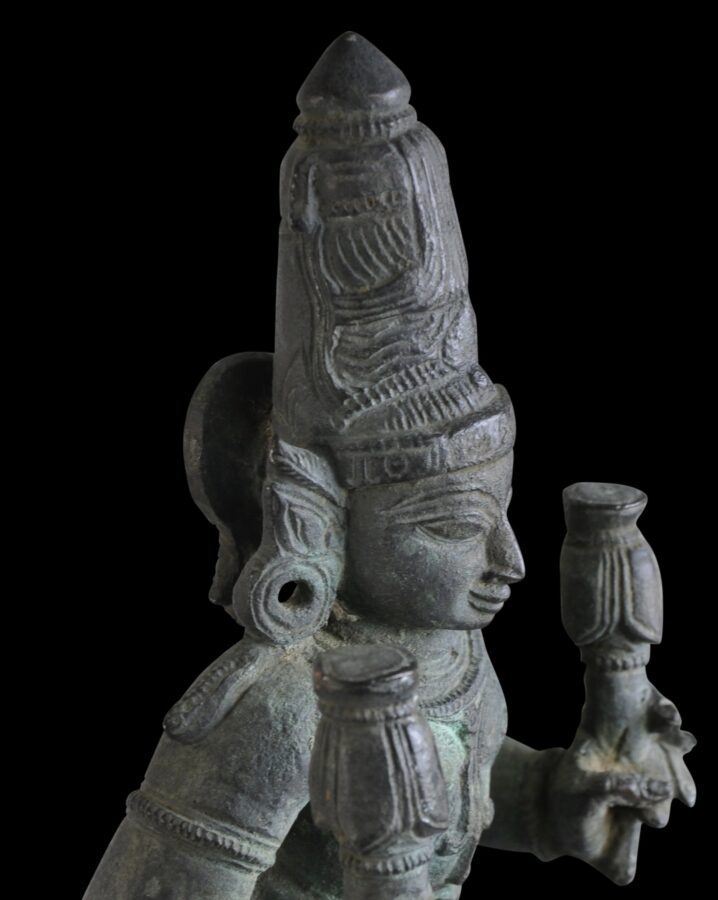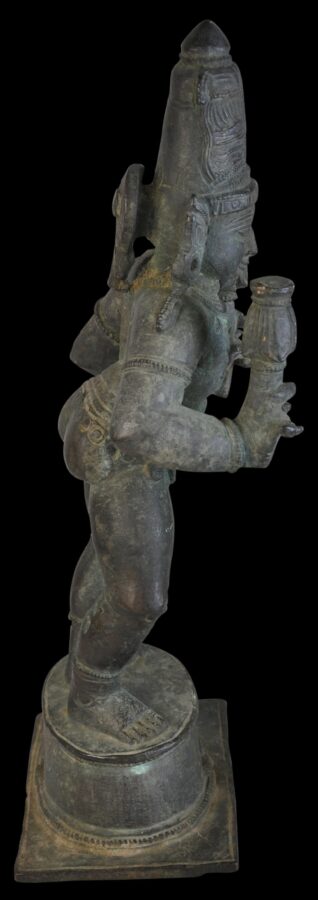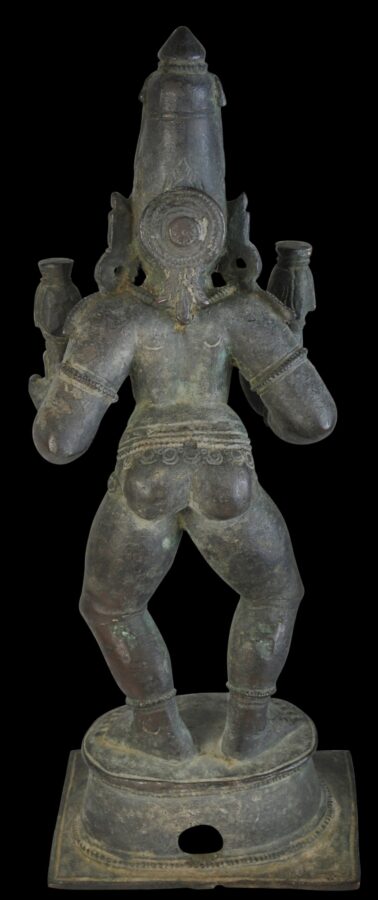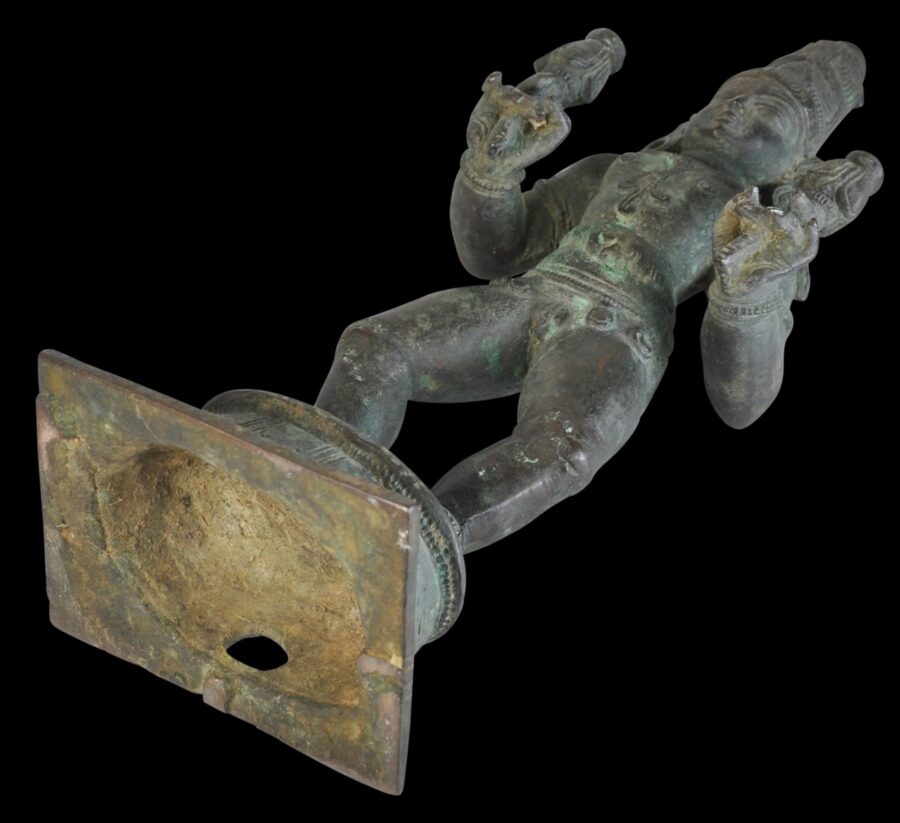This fine image of the infant Skanda, the son of Shiva and his consort Uma (Parvati), dates to the late Chola period of South India.
The infant god is shown in conventional pose – a dance pose – standing on a raised, incised, oval platform, with knees bent and holding in each hand a lotus bud.
He wears a tall hair style and copious jewellery, including large, rounded earrings, and a jewelled waist band.
The image is cast with a forward lean – most probably, the image was intended to be part of a larger bronze group which would have included Shiva and Uma, a family group known as a Somaskanda image, and be displayed in a raised position so that Shiva and Uma would look ahead but Skanda would gaze down at worshippers.
The image has a fine, varying, grey-green patina. It is accompanied by an old wooden stand that was made for it, probably in England, and which itself has significant age.
References
Blurton, T.R., Hindu Art, The British Museum Press, 1992.
Dehejia, V., The Sensuous and the Sacred: Chola Bronzes from South India, American Federation of Arts/Mapin, 2003.
Guy, J., et al., Chola: Sacred Bronzes of Southern India, Royal Academy of Arts, 2007.
Pal, P., Art from the Indian Subcontinent: Asian Art at the Norton Simon Museum, Yale University Press, 2003.
Srinivasan, P.R., Bronzes of South India, Government Museums Madras, 1994.


